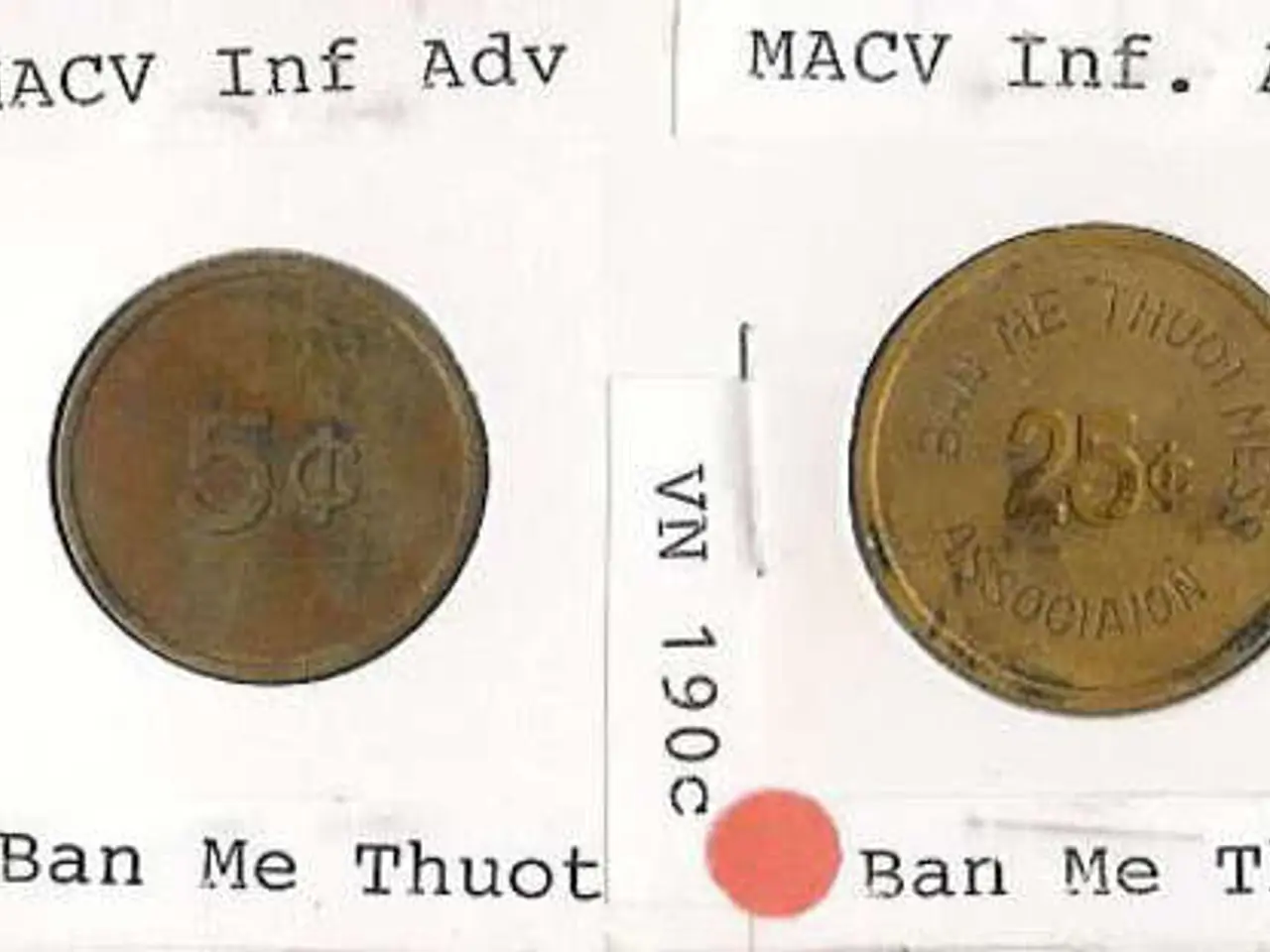Strategizing the Moves Traditional Establishments Could Embrace to Drive the Future of Blockchain Finances
=====================================================================
In a groundbreaking shift, traditional financial institutions are leveraging blockchain technology to unlock faster, cheaper payments, real-time financial operations, and innovative ways to engage with customers, partners, and global markets.
One of the most significant developments in this space is the Brazil's DREX CBDC pilot, which involves collaboration with major players like Visa, Santander, Microsoft, and Chainlink. This initiative aims to embed blockchain under regulatory oversight, paving the way for blockchain-based financial services within the traditional banking system.
The trend is not limited to Brazil. The President of the United States, Donald Trump, has established a strategic bitcoin reserve, and state treasuries are adding bitcoin to their balance sheets. States like Wisconsin are treating Bitcoin like digital gold, further legitimizing its role in the financial world.
Public companies are also jumping on the bandwagon, holding a growing portion of their reserve in bitcoin. Dozens more public companies are expected to follow suit by year-end, an 18% increase from the prior quarter, according to Blockware's Q3 2025 outlook.
Stablecoins, digital tokens designed to maintain a stable value, are entering the mainstream. Companies issuing stablecoins are going public through IPOs, bringing blockchain technology directly into the regulated financial system. Institutions like BlackRock and JPMorgan are already offering tokenized assets and settlement processes on blockchain.
Traditional financial institutions are recognising the importance of early investment in blockchain infrastructure, regulatory alignment, and internal education. Leadership prioritization of internal education is one of the biggest drivers of adaptation in the crypto space. Internal education, workshops, and collaborative planning are crucial for traditional financial institutions before launching any blockchain pilot.
Regulators, traditional financial institutions, and fintech innovators working together can build the future of finance and money. The GENIUS Act, recently signed by the President of the United States, is a testament to this collaborative spirit.
Visa is piloting stablecoin-linked debit cards across Latin America and Africa, demonstrating the potential for widespread adoption of blockchain technology in everyday financial transactions.
In a nutshell, the key strategies for traditional institutions to lead in blockchain finance, as outlined by Marcos Viriato and edited by Chelsea Brown, include treating blockchain as a foundational layer for the future of finance, investing early in blockchain infrastructure, regulatory alignment, and internal education, engaging proactively to define operational, regulatory, and technical standards, and fostering greater regulatory clarity through collaboration between regulators, traditional financial institutions, and fintech innovators.
These strategic steps position traditional institutions to shape blockchain finance by building foundational infrastructure and regulatory frameworks while harnessing industry collaboration, ushering in a new era for the financial sector.
[1] Marcos Viriato and Chelsea Brown, "Strategies for Traditional Institutions to Lead in Blockchain Finance," [forthcoming].
- Businesses worldwide are exploring the potential of blockchain technology for faster, cheaper transactions and real-time operations.
- Leading American companies are using regulated financial systems to hold bitcoin reserves, treating it as digital gold.
- Traditional financial institutions are investing in blockchain infrastructure, aligning with regulations, and educating their leaders to adapt to the crypto space.
- Stablecoins, digital assets designed to maintain a stable value, are now going public, bridging blockchain technology with the regulated financial system.
- Institutional leaders like BlackRock and JPMorgan are offering tokenized assets and settlement processes on blockchain for a more streamlined financial system.
- Success in blockchain finance requires a strategic approach, including treating blockchain as a foundation for the future, early investment, collaboration, and advocating for regulatory clarity.
- The GENIUS Act, a recent legislation signed by President Trump, demonstrates the importance of collaborative efforts between regulators, traditional financial institutions, and fintech innovators in shaping the future of finance and money.




